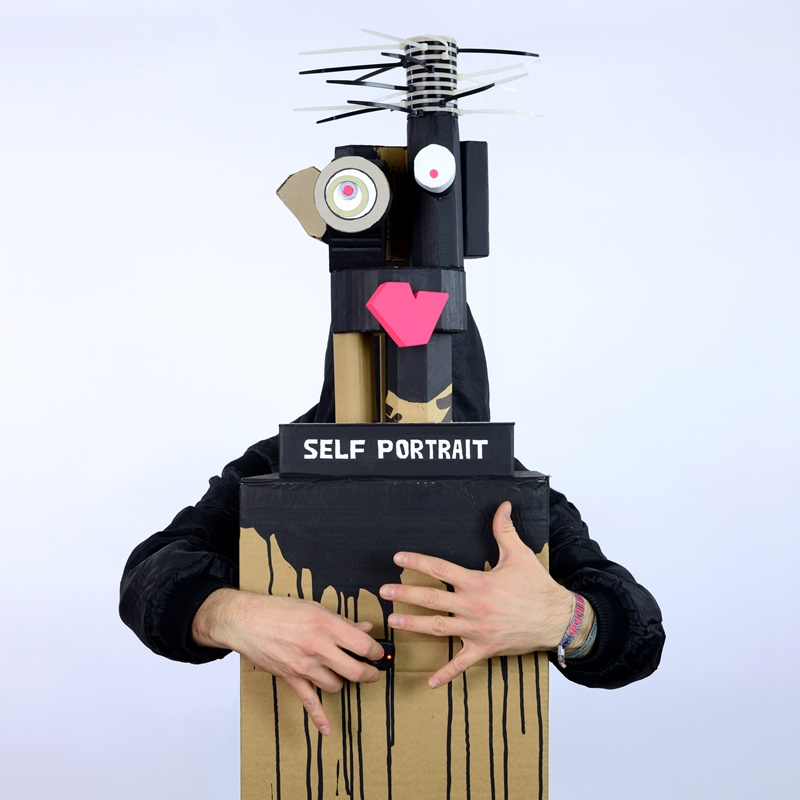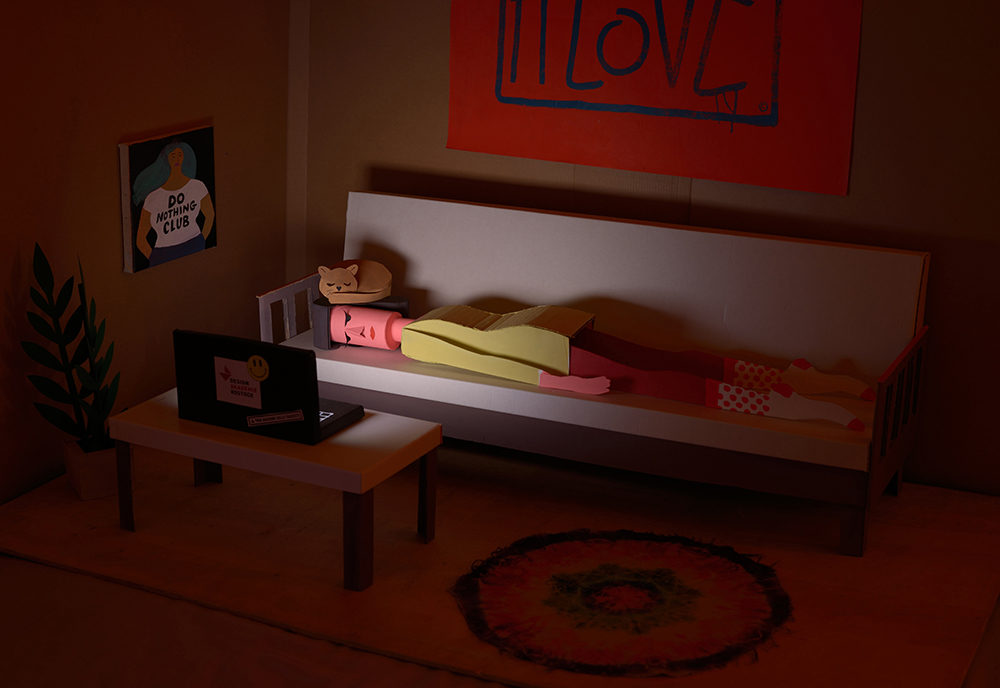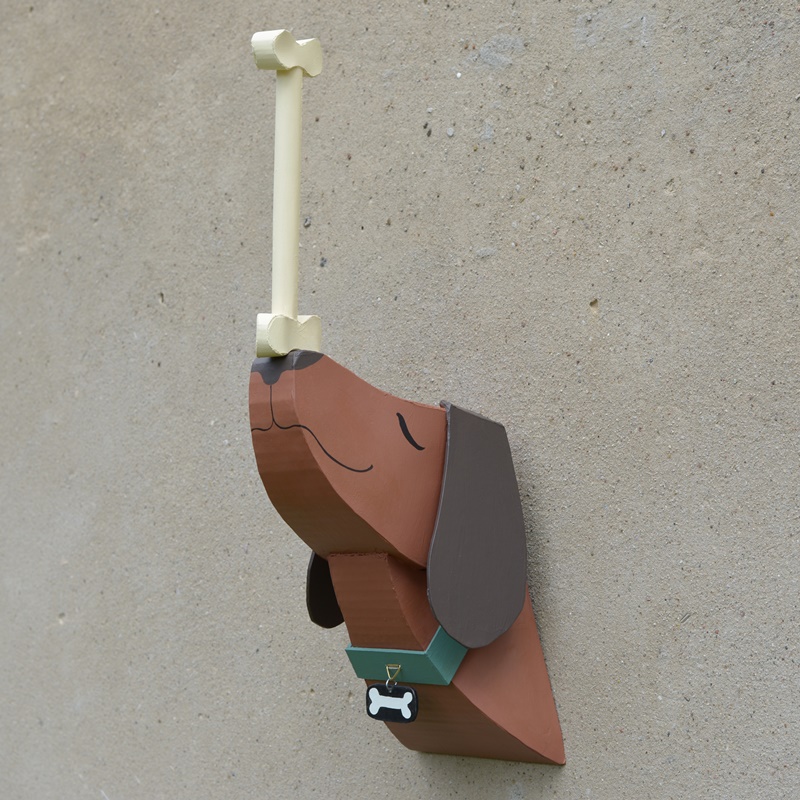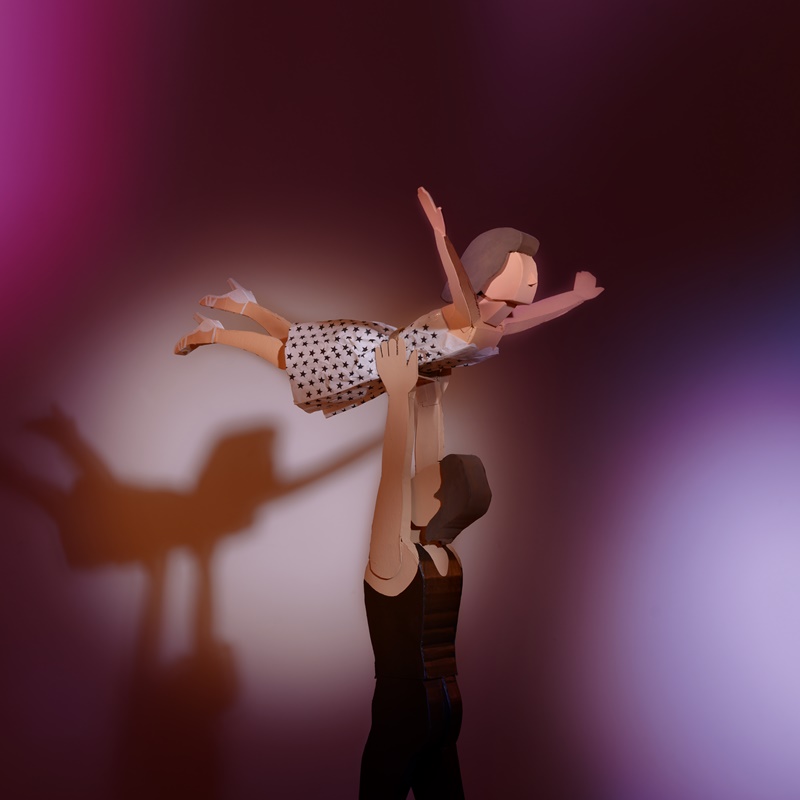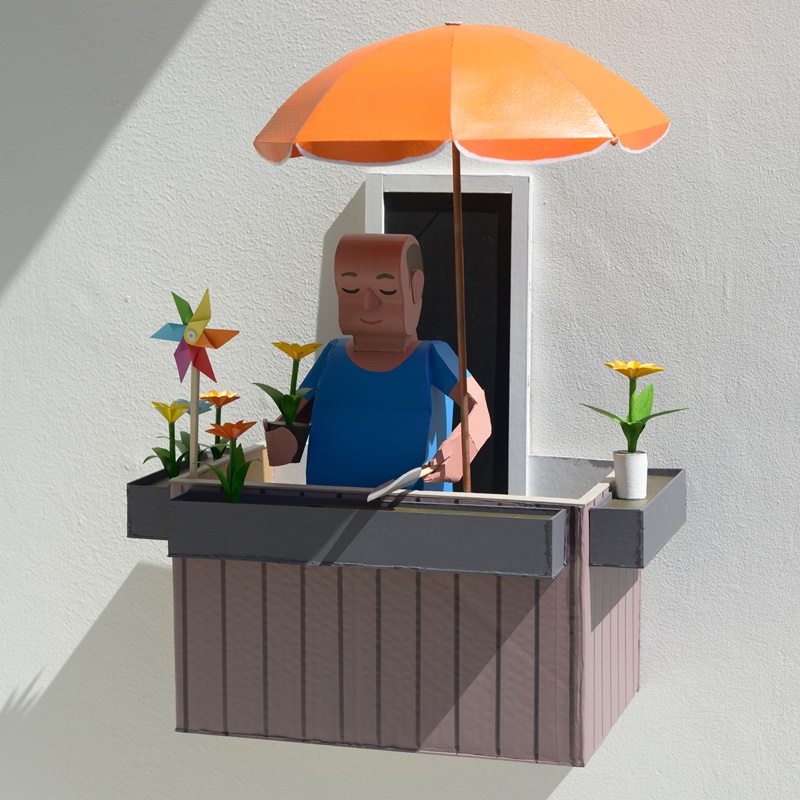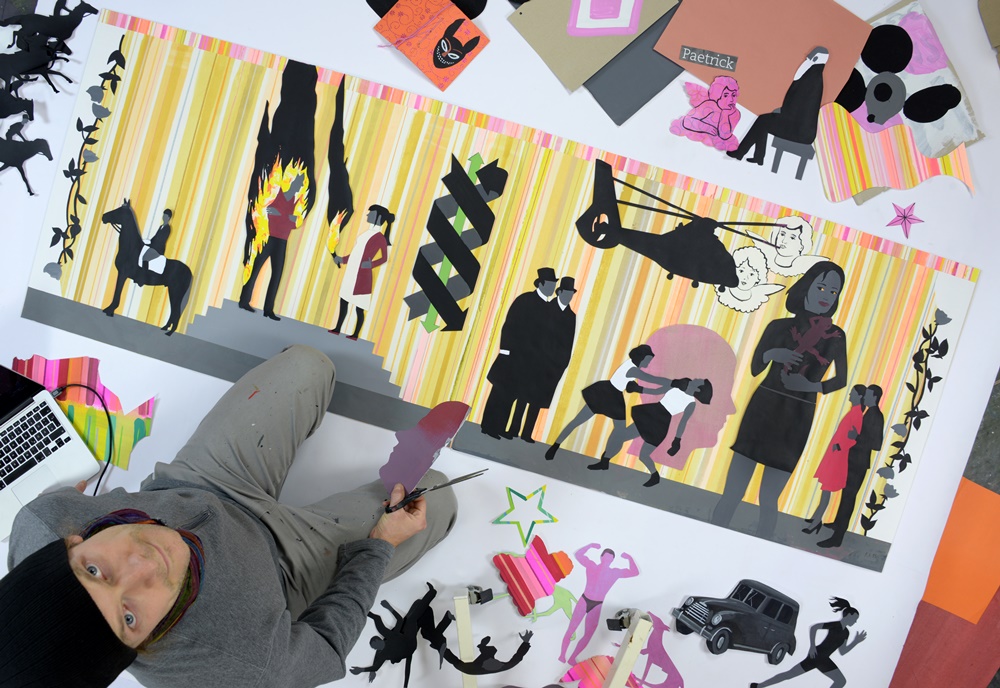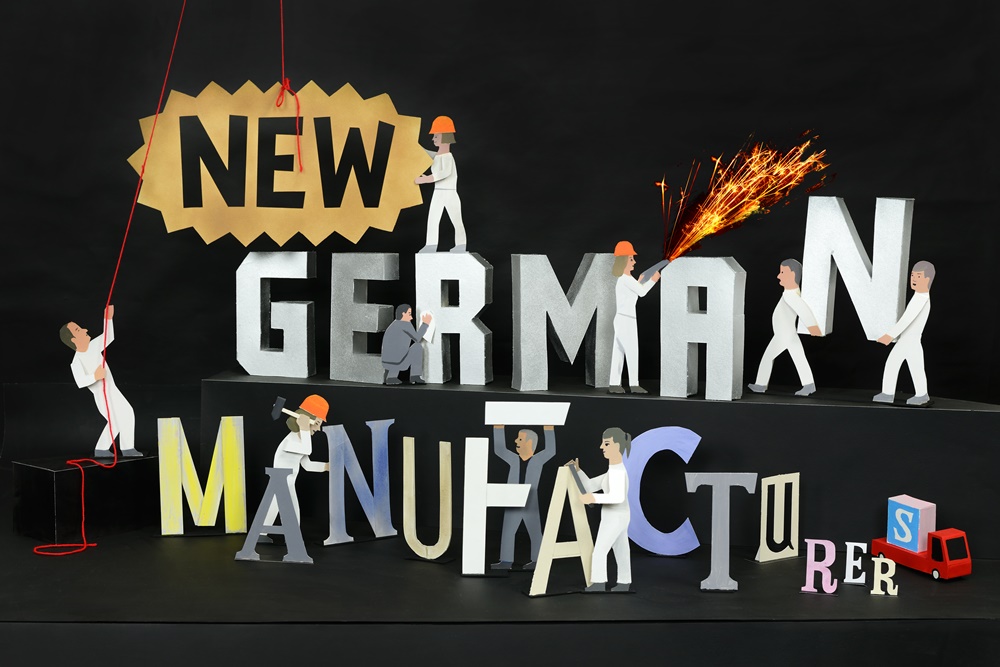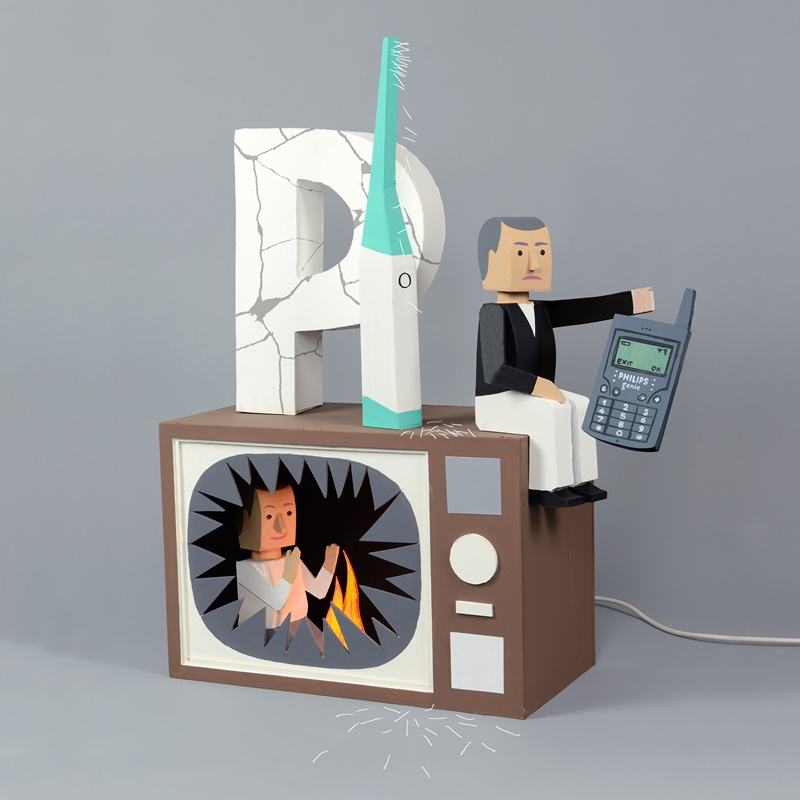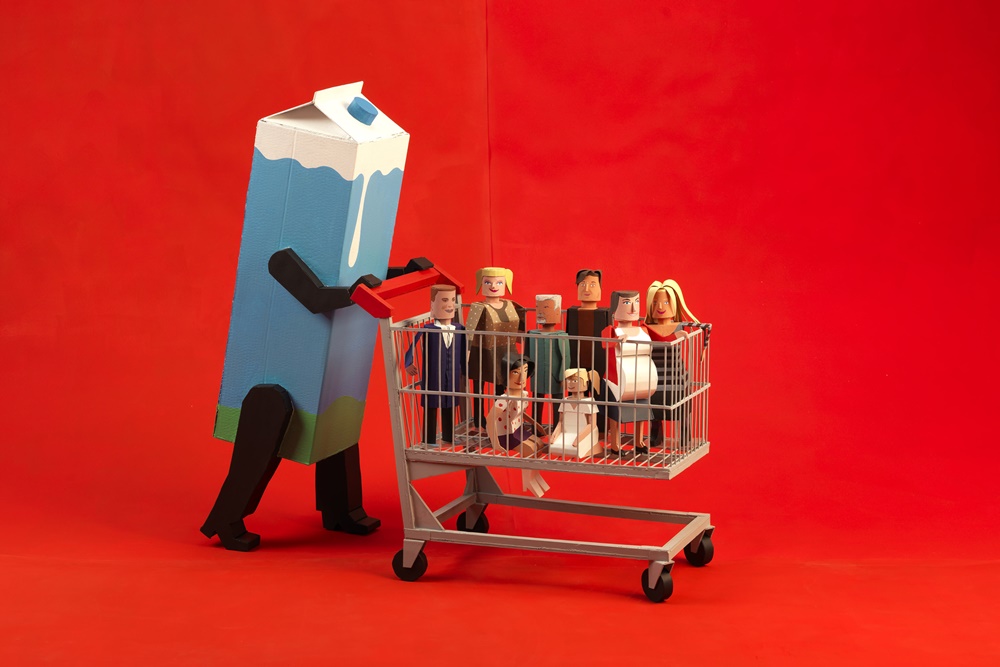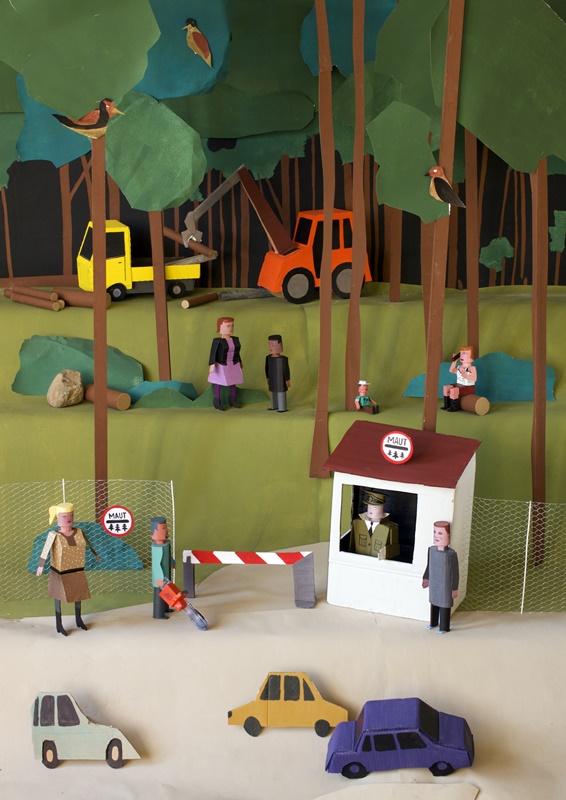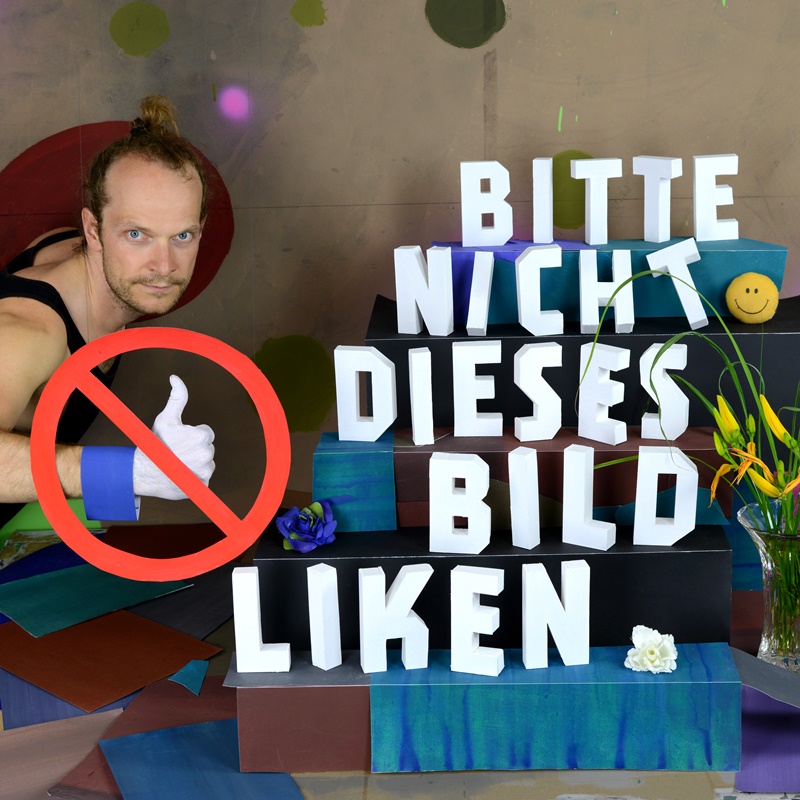P3 5-6/2021 en
Paetrick Schmidt
“I Love to Stage Pictures.”
Paper & People
In response to his - quite usual - question of how long he still has time to answer the questions, I can reassure Paetrick Schmidt in Berlin: There is no hurry yet. The answer, however, comes as quite a bit of a surprise: “Thank you very much,” says the qualified designer, whose reference list includes Greenpeace, Spiegel, Focus, Burda and Ogilvy, “then I can give even more thought to developing the answers.” Thunderstorm, someone is trying! This attention to detail is also reflected in his not quite everyday work, as the self-portrait on the left clearly illustrates.
Paetrick Schmidt: Self-portrait, variant 1.
Paetrick, you are known for your tactile and graphic illustrations, which you mainly produce on the basis of paper and cardboard. Tell us about your career - what was the driving force to get to where you are now?
Paetrick Schmidt: During my communication design studies, it was difficult for me in the illustration class to draw scenes from different perspectives for a comic. I made models out of paper and cardboard intuitively, which I used as a drawing aid. When I had a stately collection together, the idea occurred to me that I could also use them illustratively. By using them as modular building blocks, I also found the opportunity to put together new images over and over again, which I then captured photographically.
It's nice to see my universe grow, and each new character created adds to my stage staff. When they go their way after an art exhibition, because they have been sold, the thought that I cannot accommodate them all in the long run helps me get over the pain of separation.
What is the fascinating thing about dealing with paper or cardboard for you?
PS: The material and the abundance of variants fascinate me enormously. Each of them, whether thin copy paper, corrugated cardboard or sturdy bookbinding board, has its own individual characteristics and properties. Paint can be applied to paper and cardboard extremely well. I also use construction paper, but mostly I determine the color through a specific painting. Paper and cardboard can be easily shaped by folding, tearing and cutting and can be easily bonded with glue. The hot glue gun is always ready to hand in the holster during work.
Could you imagine working purely digitally? The possibilities in digital design are immense and - so it seems - also becoming easier to handle ...
PS: I'm divided on that. Perhaps in a future in which technology has advanced to such an extent that the virtual no longer differs from reality to the full extent of the sensations. That we are moving in this direction is evident in my eyes.
I've been using computers for creative work for almost 30 years. I experienced my initiation in my nursery on an Amiga 500 with the Deluxe Paint software. I've been familiar with Photoshop and Co and drawing on tablets for a long time and I'm enthusiastic about the ongoing development. My recently purchased iPad Pro is currently making a big impression on me. It's great how easy it is to draw with apps like Procreate.
Nevertheless, I still experience the highest level of satisfaction with the manual handling of tactile material. For me, the quickly thrown sketch on paper is the foundation of all idea generation processes. Simultaneous visibility of workpieces is also an advantage over digital works that should not be underestimated.
Nowadays the media like to suggest that everyone can do and achieve anything without having to exert too much effort. In many cases, there is little more to it than an attack on the wallet. What sets a good, long-term successful artist apart from the crowd - the ability to be inspired or the quality of the training?
PS: A thesis by the psychologist Anders Ericsson says that we need 10,000 hours to become a master in our field. Assuming we worked 8 hours a day, 10,000 hours would be reached in around 3.5 years. But what use is this calculation if the job itself is not driven by enthusiasm? Without it, it's actually just an effort driven by expectations. In the state of enthusiasm that can be aroused by inspiration, however, there is neither a measure of time nor an awareness of success. We find happiness in the spontaneity of creating and learning, regardless of age.
Also thought beyond art: if everyone could do everything, we would no longer be dependent on each other. That would be a shame, because community is created when we complement each other in our individual characteristics and abilities. As a lecturer, I try to convey this attitude to the students.
“I would like to replace the badges on the Pioneer probes.”
Paetrick Schmidt
Which topics do you take up in your work and when are you satisfied with a result?
PS: Basically, I am open to all conceivable subject areas. The challenge is to find appropriate answers to a thematic question. I am satisfied when I can convey this to the viewer emotionally and in a graphic that is as succinct and pointed as possible.
What is decisive for you in order to accept a new project offer? Or the other way around: What kind of inquiries do not appeal to you at all?
PS: I have to be reasonably convinced of the project or the product in the applied work. So far, this has been almost always the case. I only remember one situation - the request was about a greenwashing campaign for a well-known car brand. Despite doubts, I threw myself into the project, but was then happy when the contract for the final implementation went to another agency.
What's behind your Painted Songs?
PS: My music consumption changed from physical sound carriers to digital files and online streams. I lack the deeper connection to the piece of music that arises through haptic contact with the tangible sound medium. For this reason I have been “noting” my favorite songs, which are only known digitally, for about 6 years in the form of paintings and collages. All works created so far have a square format with a size of 40 by 40 cm, alluding to the classic record cover. There are currently around 250 copies. Incidentally, the image carriers are mostly the recycling of cardboard and paper from other works. I feel infinitely free with this project, as the conceptual framework through belonging to the collection legitimizes even the most modest implementation.
The portfolio ranges from Dusty Springfield and Frankie Valli to Kate Bush and Nils Frahm to Portishead and Aphex Twin. Is there music that doesn't captivate you or that you couldn't be creative with?
PS: Oh yes, a lot. Only a fraction of the music that I encounter - wherever - triggers a response in me and stays with me. Why music resonates can have various reasons, e.g. the gripping rhythm and / or an appealing text, etc. If it doesn't, it can simply be because I am not sufficiently receptive at the moment of listening.
You also deal a lot with photography ...
PS: I love to stage pictures. All the same, whether it is a crowd of my handcrafted doll people, or whether I place people in masquerade in a set of props - it is the photography with which I capture the staging pictorially. It offers an extensive variety of designs, which I find appealing. The lighting, for example, has a great influence on the photographic result. Occasionally I use the stop-trick animation technique for film projects, which of course is also subject to the laws of photography.
Is there a project that you absolutely want to do but that has not materialized so far - for whatever reasons?
PS: No, when I think of a project, nothing stops me from putting it into practice.
Wait, there is indeed one exception! I would like to replace the badges on the Pioneer probes. The woman would also raise her arm on mine in greeting the aliens, like the man pictured next to her. This representation needs a contemporary update.
Do you have any advice that you would like to give young, aspiring artists or talents on their way?
PS: Solidarize yourselves! Participate in art initiatives, exhibition groups, art associations, etc. The older I get, the more I become aware of the value of the collegial community. Together we are strong.
And finally: What is the name of Schlossallee in your Monopoly?
PS: Home sweet home and pure variety; the Gleimstrasse in the Brunnenviertel in Berlin.
Paetrick, thank you for talking to us!
PS: Thank you for the interesting questions.






